Every Friday, in a paved lot tucked between apartment blocks in the Muratpaşa district of Antalya, the city arranges itself into one of its most vivid weekly rituals: the Friday Market. This isn’t a polished tourist stop. It’s where locals come to stock up on produce for the week, chat with their favorite vendors, and weigh tomatoes by the kilo in the shade of striped umbrellas.
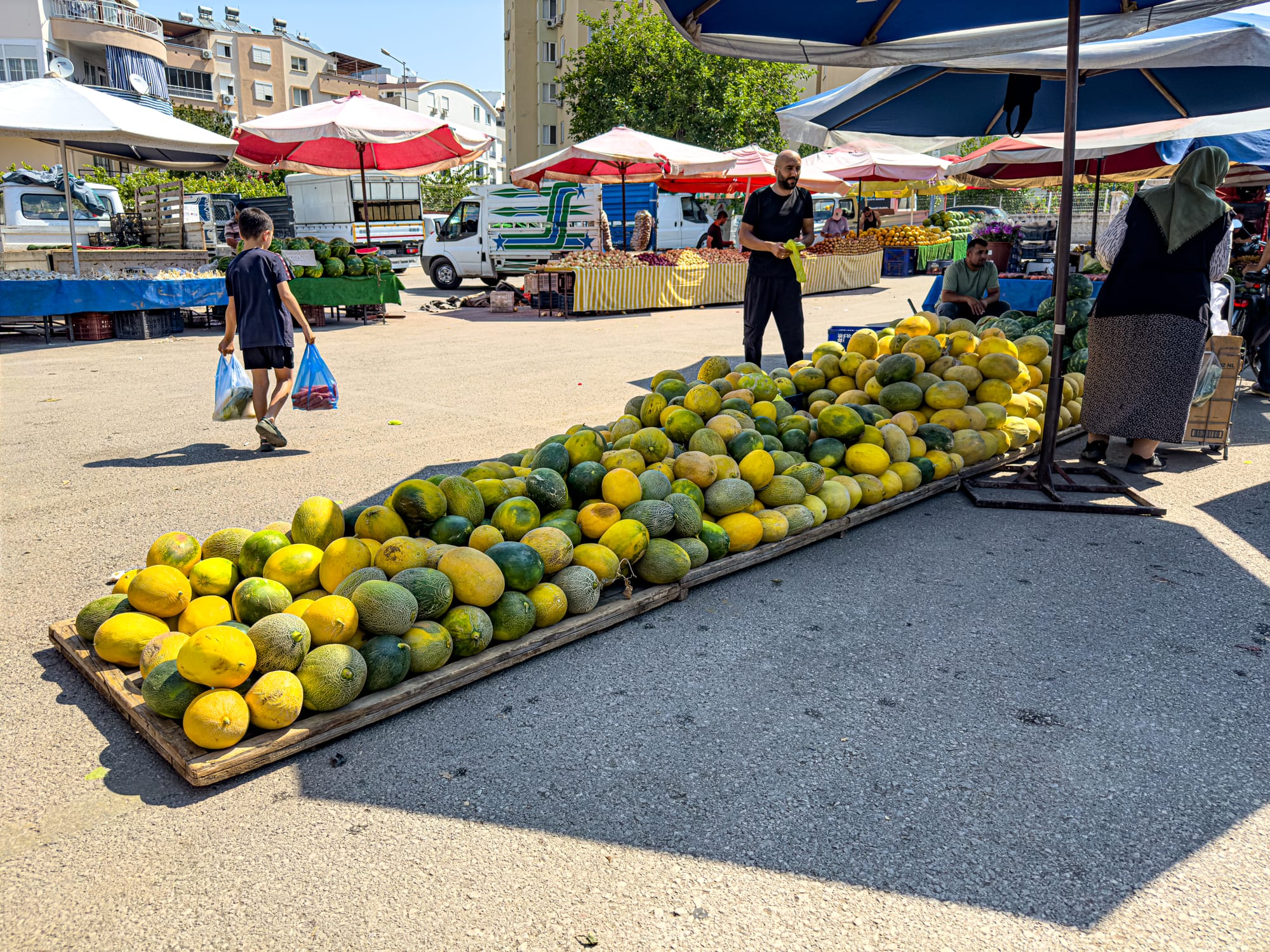
If you're staying in Antalya—especially if you're in a short-term rental with access to a kitchen—this is the best place to shop for fresh, local ingredients. But even if you're not cooking, it’s worth visiting for the sheer atmosphere alone.
First impressions: a feast for the senses
The first thing you’ll notice is the color. Tables overflow with crimson tomatoes, orange citrus, violet eggplants, deep green cucumbers, and piles of golden yellow melons. The variety is impressive, and the presentation is strikingly casual—goods piled high on simple wooden tables draped in tarps, often with hand-scrawled signs announcing prices per kilo. Prices are usually excellent, and the quality of the produce rivals, and often exceeds, what you’ll find in supermarkets.
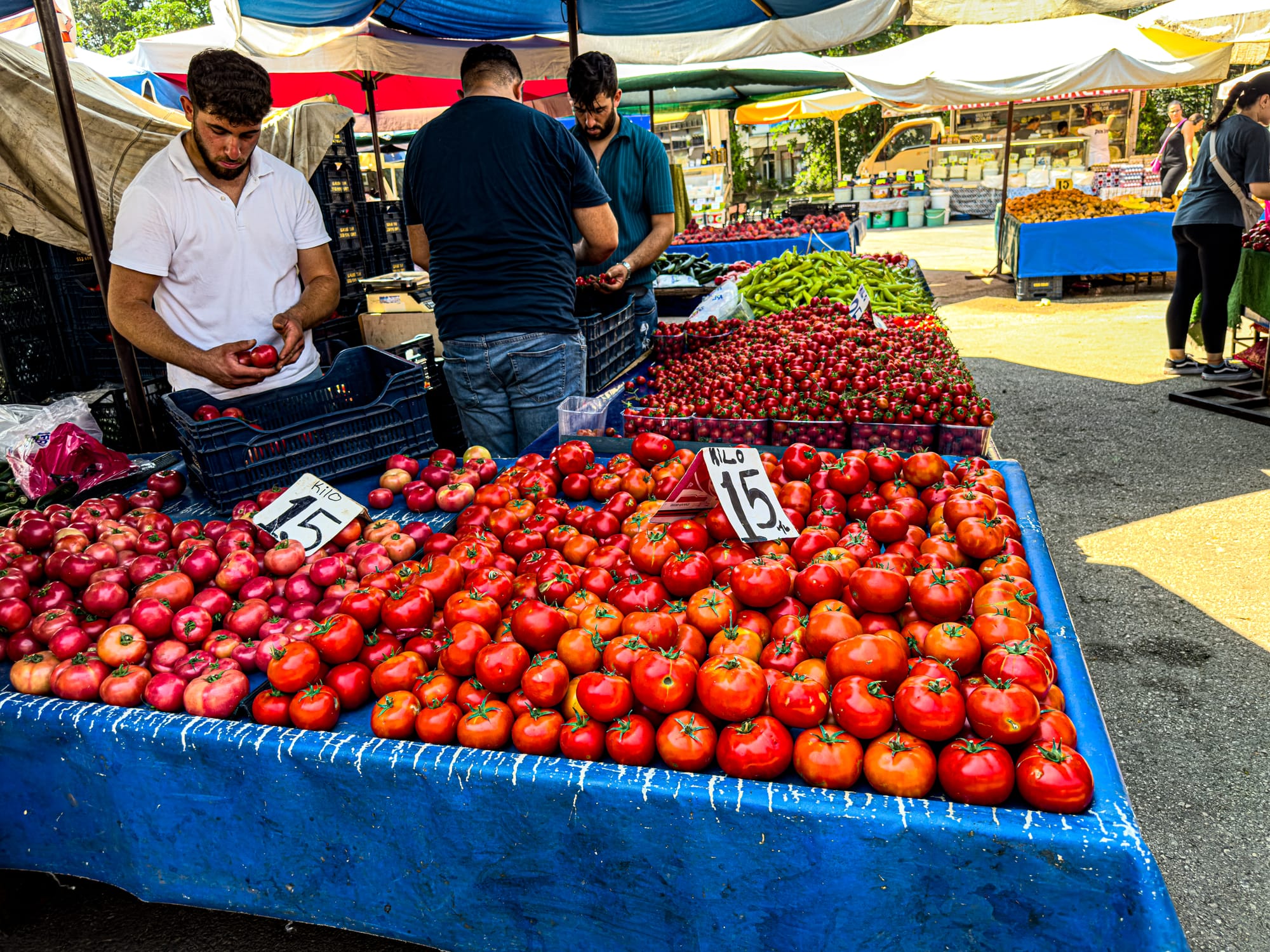
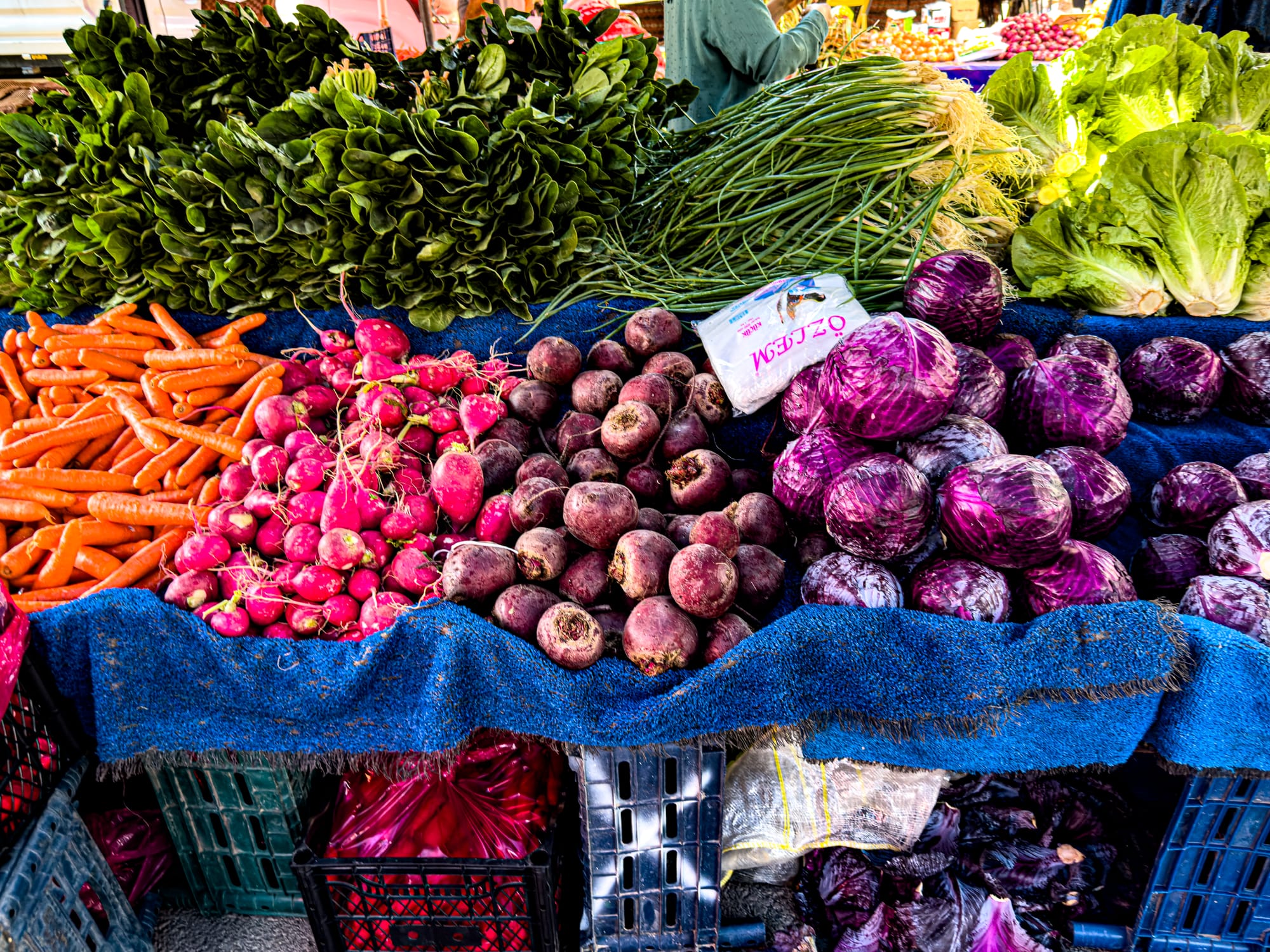
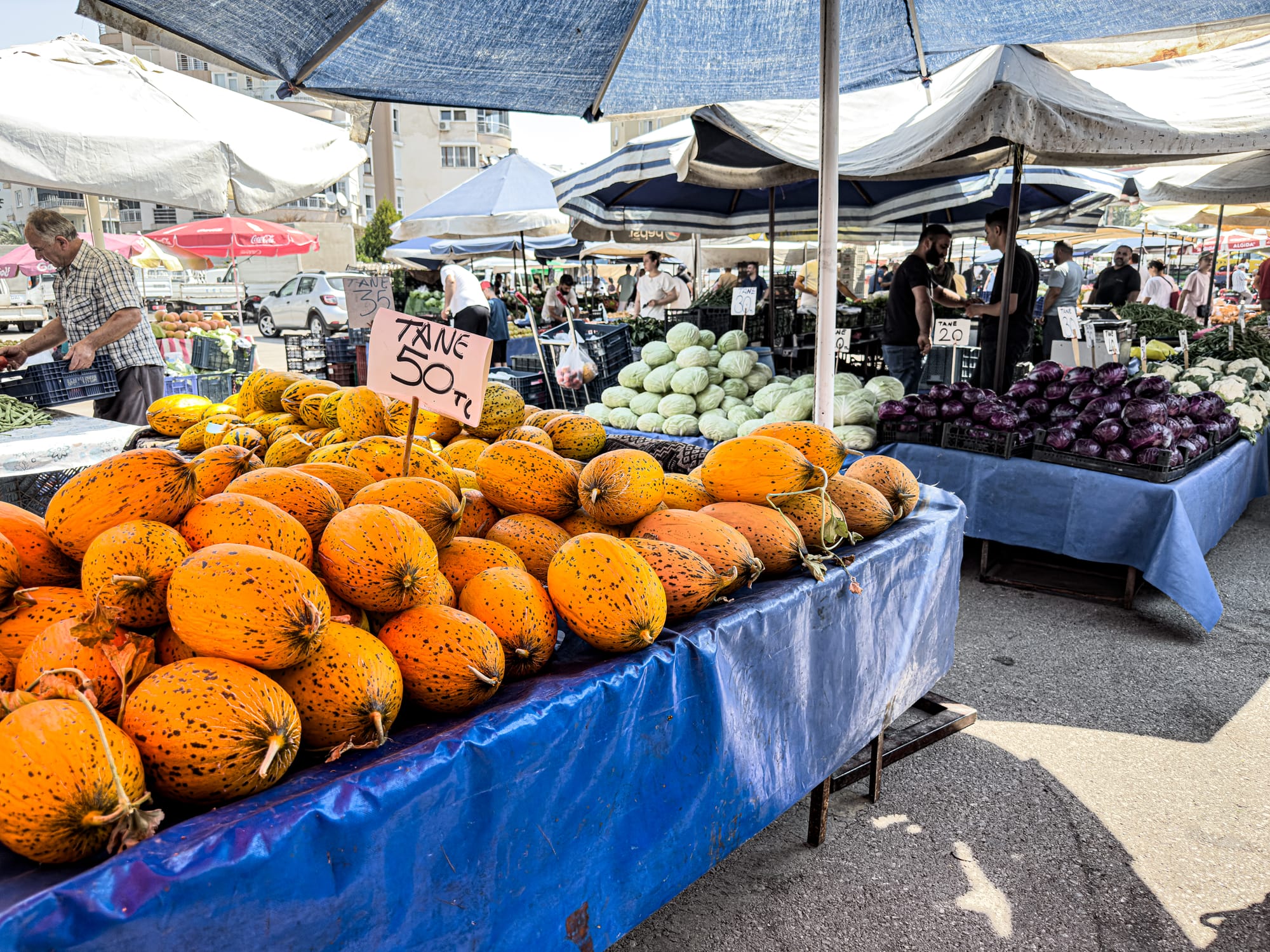
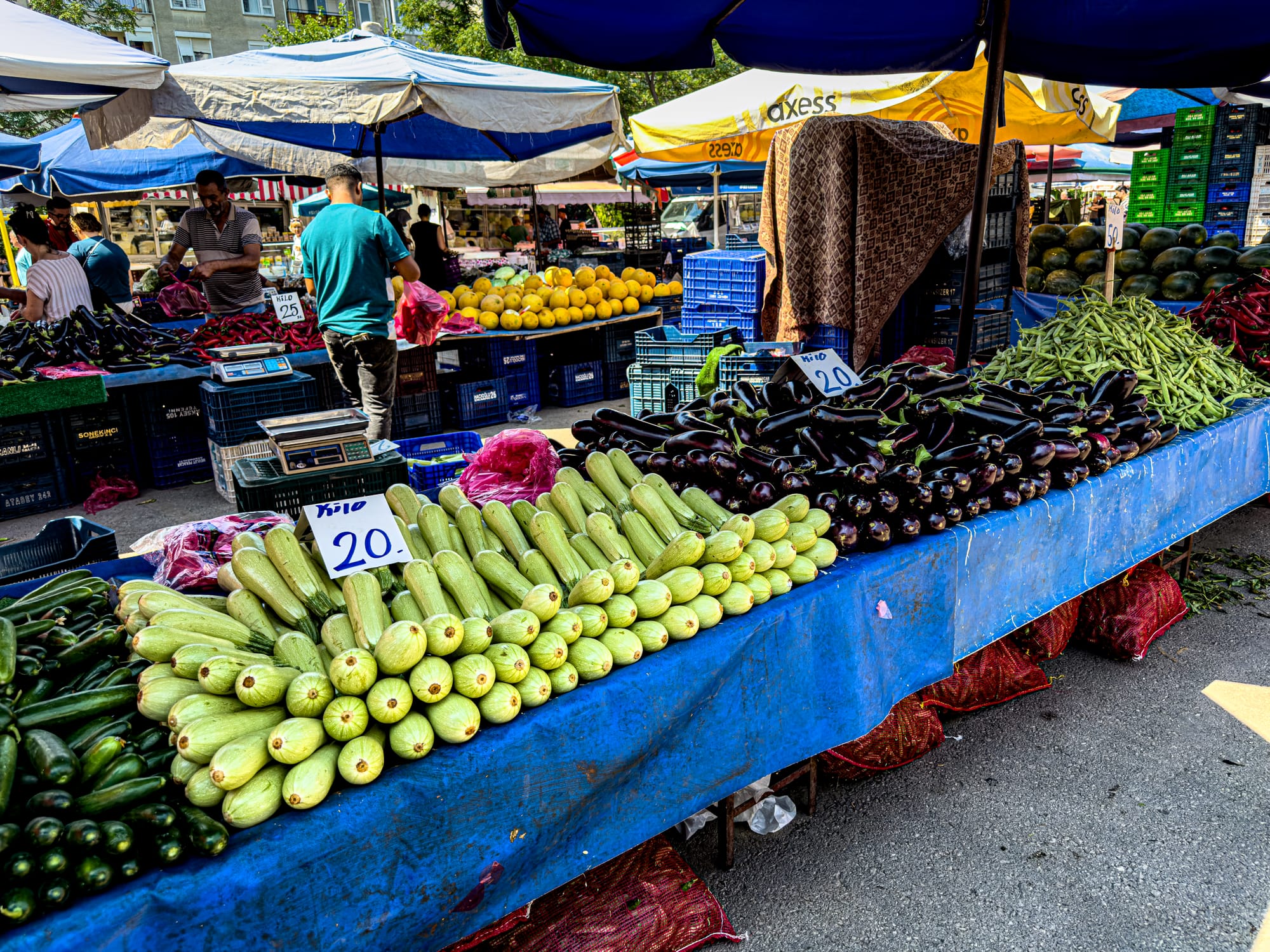
Tomatoes, squash, eggplants, and market vegetables add vibrant contrast to the blue tarps
Vendors call out their offerings in rhythmic chants, and you’ll hear Turkish phrases bouncing through the air alongside the sound of bags rustling, children playing, and small talk over produce. Most stalls specialize in just a few items: one will have only tomatoes, another stacks of leafy greens, another a dazzling array of olives in plastic tubs. There are stalls for dried fruits and nuts, for pulses and grains, for herbs tied into bundles or displayed loose in bins.
What you’ll find: from fruit pyramids to tubs of olives
At one stall, dozens of apricots spill over the edge of a table. You might catch a vendor slicing one open and handing out slivers to passersby.
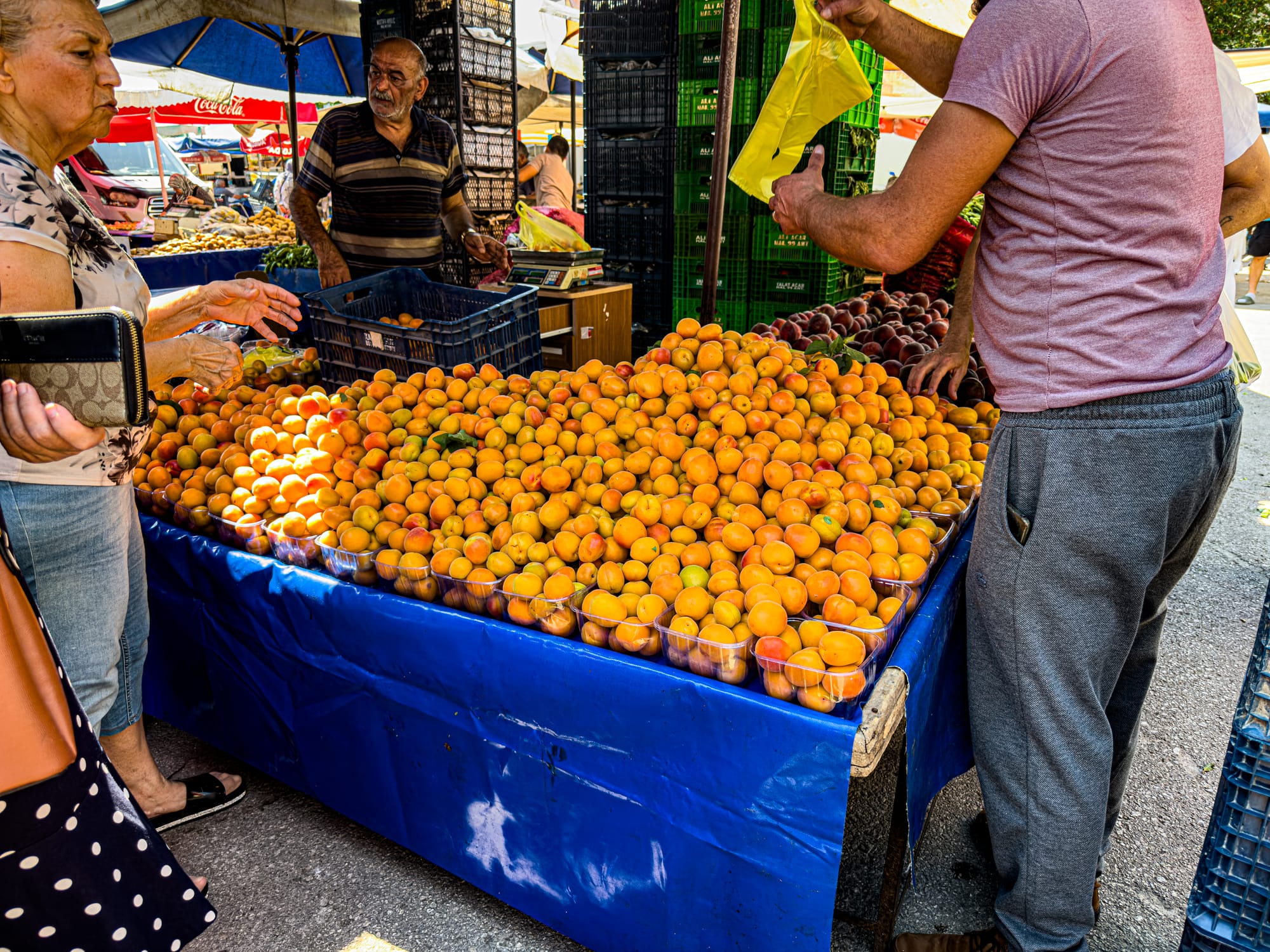
Nearby, watermelons are stacked into a massive green pyramid, while crates of tomatoes fill the air with the scent of warm, sun-grown sweetness.
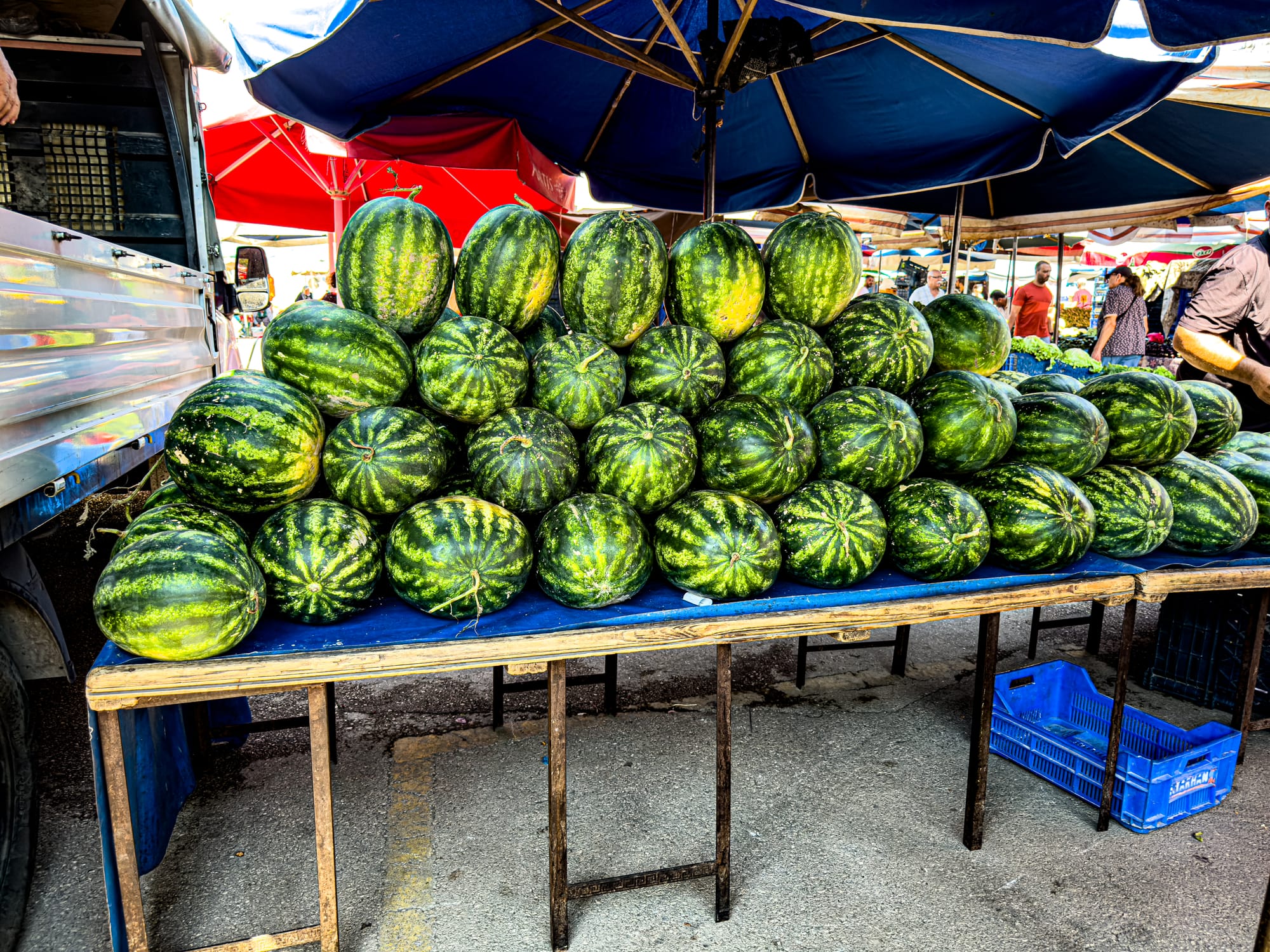
Further down, buckets brim with olives in shades of black, green, and rust, some stuffed with garlic or peppers, others marinated with herbs.
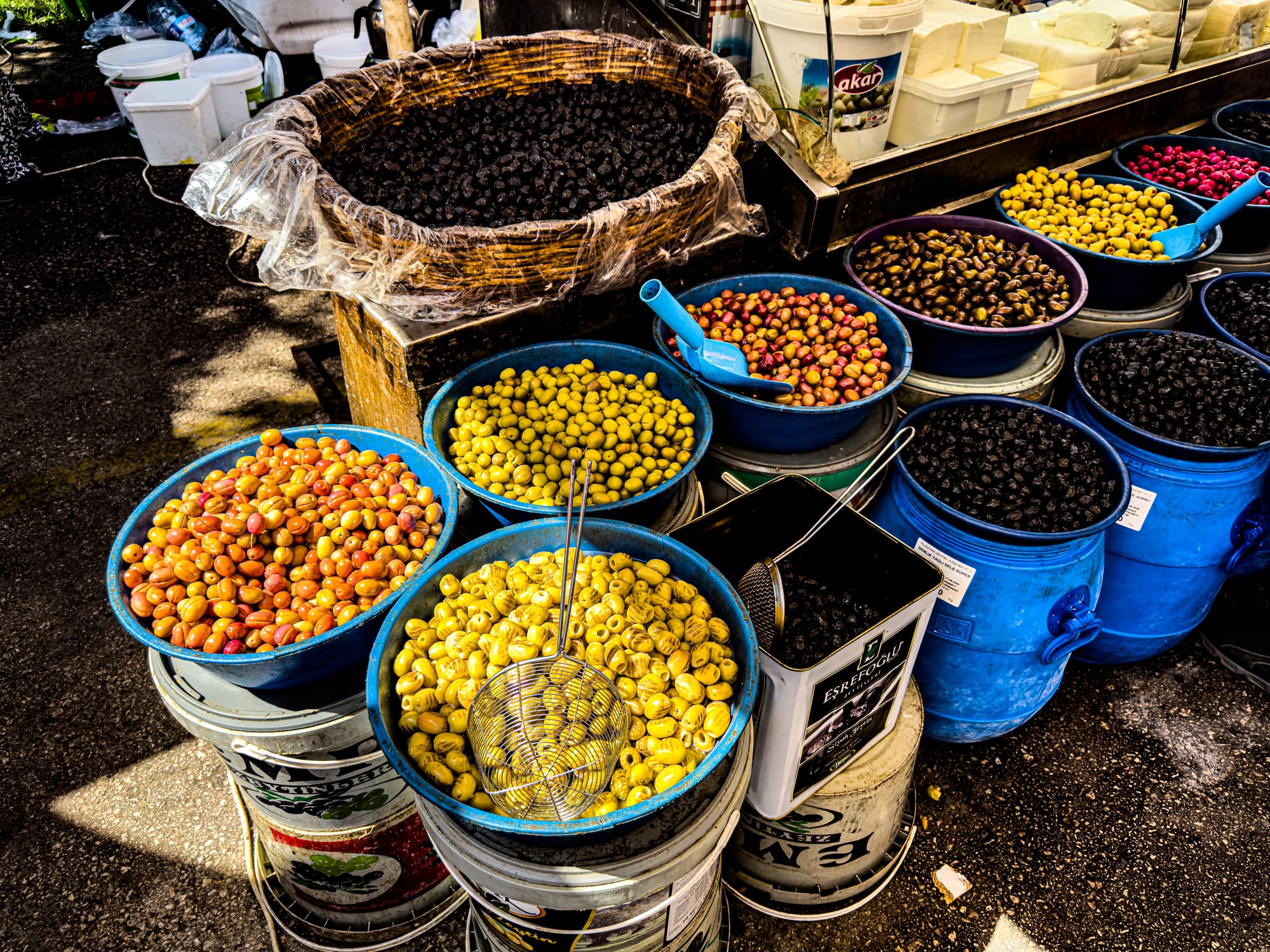
Across the aisle, vendors sell beans by the scoop—broad beans, green beans, and more. Women in floral headscarves negotiate prices and pile leafy greens into canvas totes.
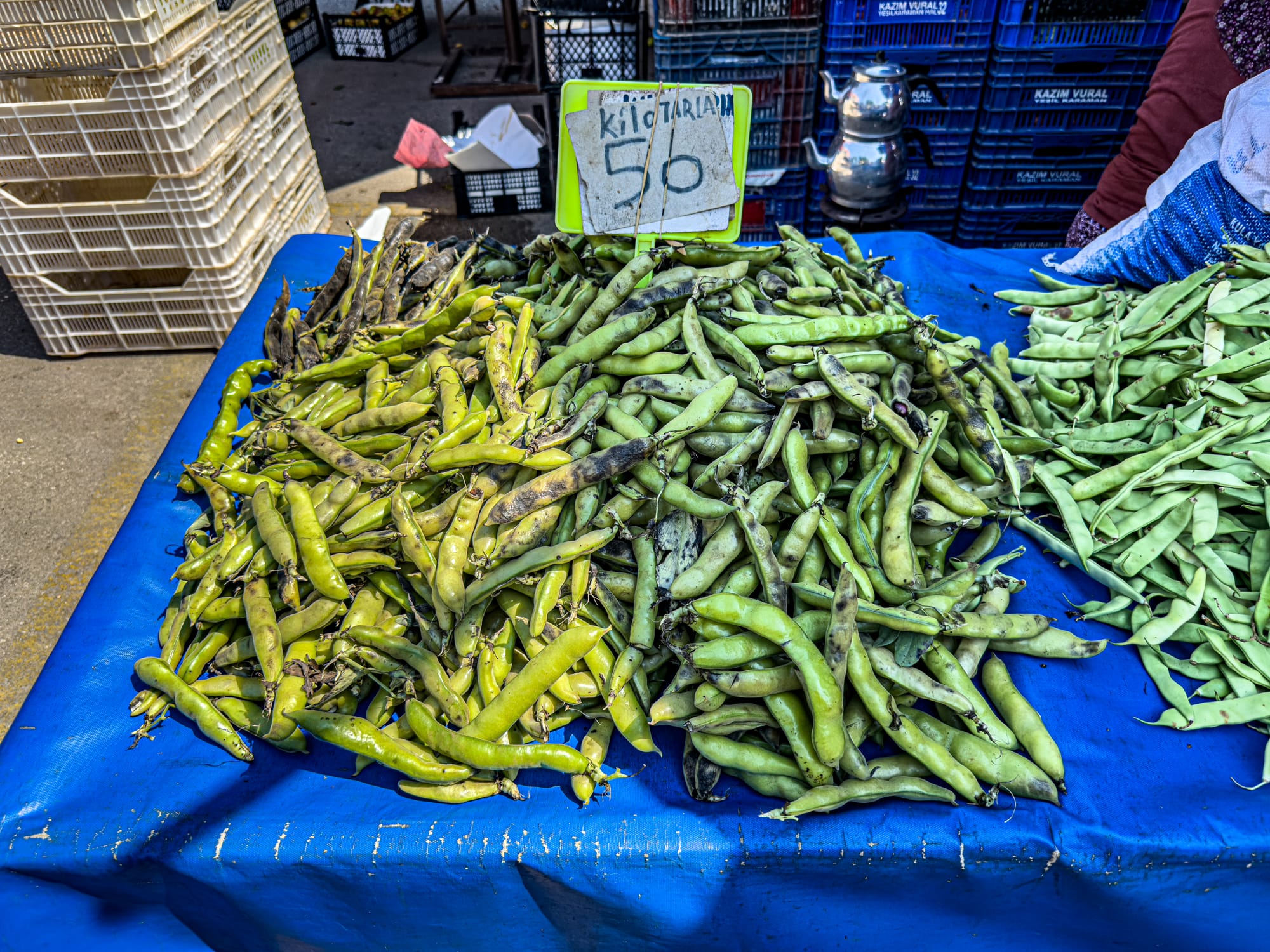
The market isn’t limited to just produce. You’ll find people selling village cheese, yogurt, fresh herbs, bundles of parsley and mint, and seasonal specialties depending on the time of year.
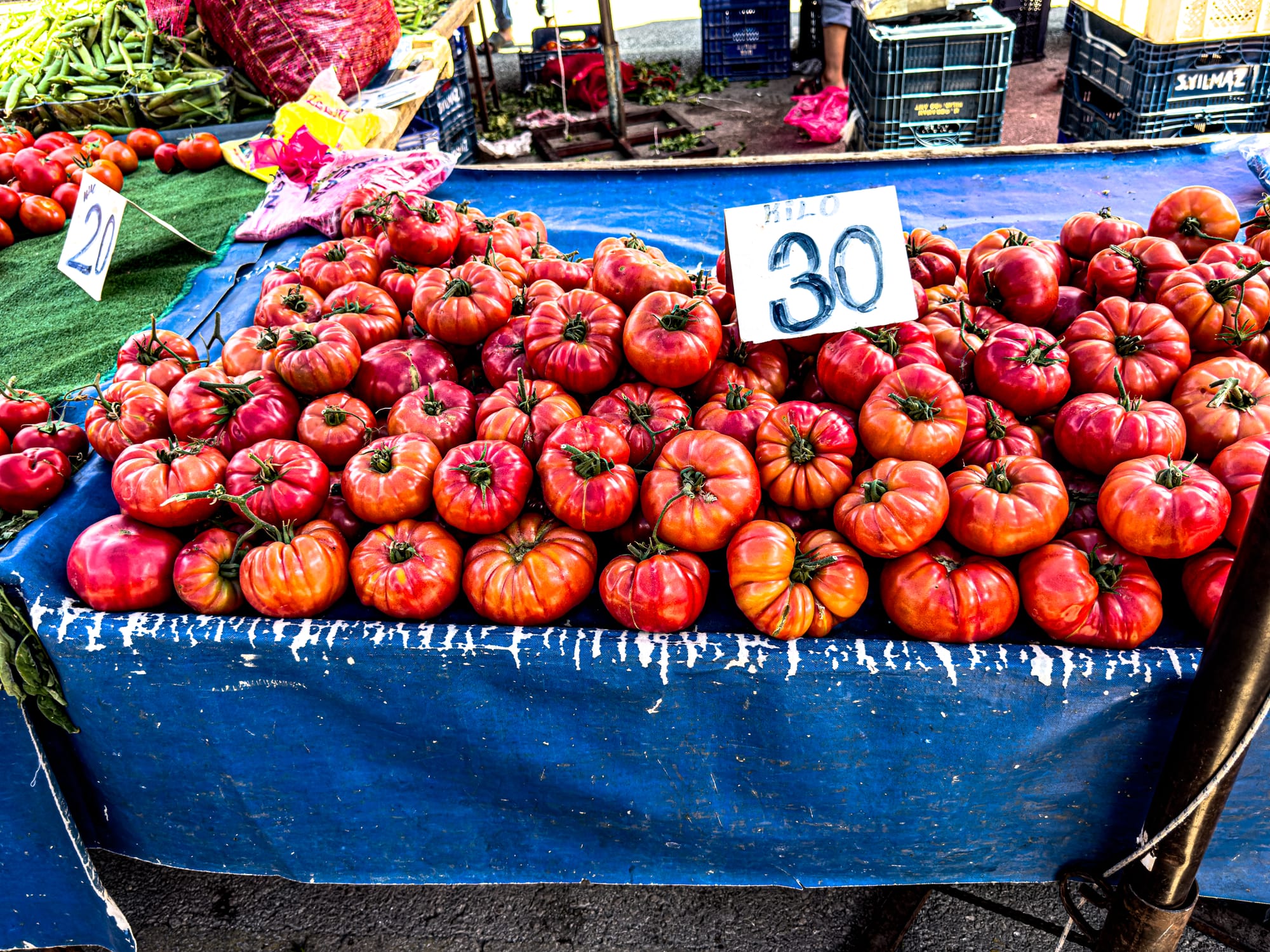
In summer, look for okra, cucumbers, and mulberries; in autumn, figs and pomegranates dominate the tables. A few stalls even sell prepared foods—stuffed grape leaves, fresh corn on the cob, gözleme sizzling on portable griddles.
For those with kitchens (and those without)
For those with kitchens, this market is a gift. Everything is fresher than what you'll find at the chain grocery stores, and often more affordable. Even if you’re only cooking for a few days, you can easily assemble a few simple meals with what’s available—zucchini for a stir-fry, tomatoes and cucumbers for a fresh salad, herbs and lemons for tea, olives and flatbread for snacks.
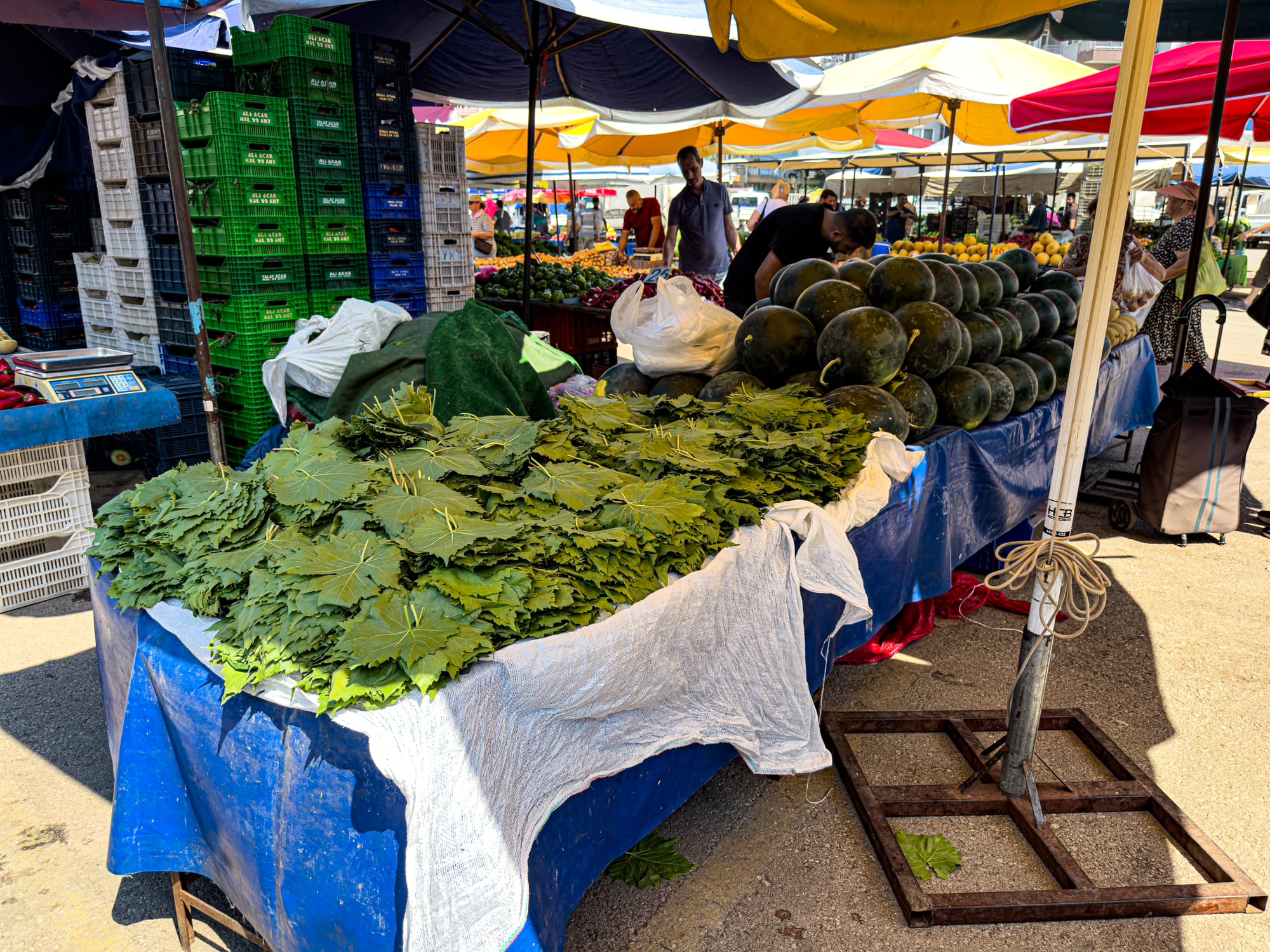
And if you’re not planning to cook, the Friday Market still has something to offer. It’s a place to witness the pace of local life, where shoppers stop and chat, kids snack on fresh fruit, and people greet one another across rows of watermelons and baskets of mint. There’s something deeply human about the rhythm of this space—weekly, recurring, familiar, and completely in tune with the seasons.
A visual highlight: spices, grains, and dry goods
One of the most photogenic parts of the market is the spice and dry goods section. Metal bowls filled with lentils, bulgur, beans, and chickpeas sit alongside towering mounds of turmeric, dried red pepper, and sumac.
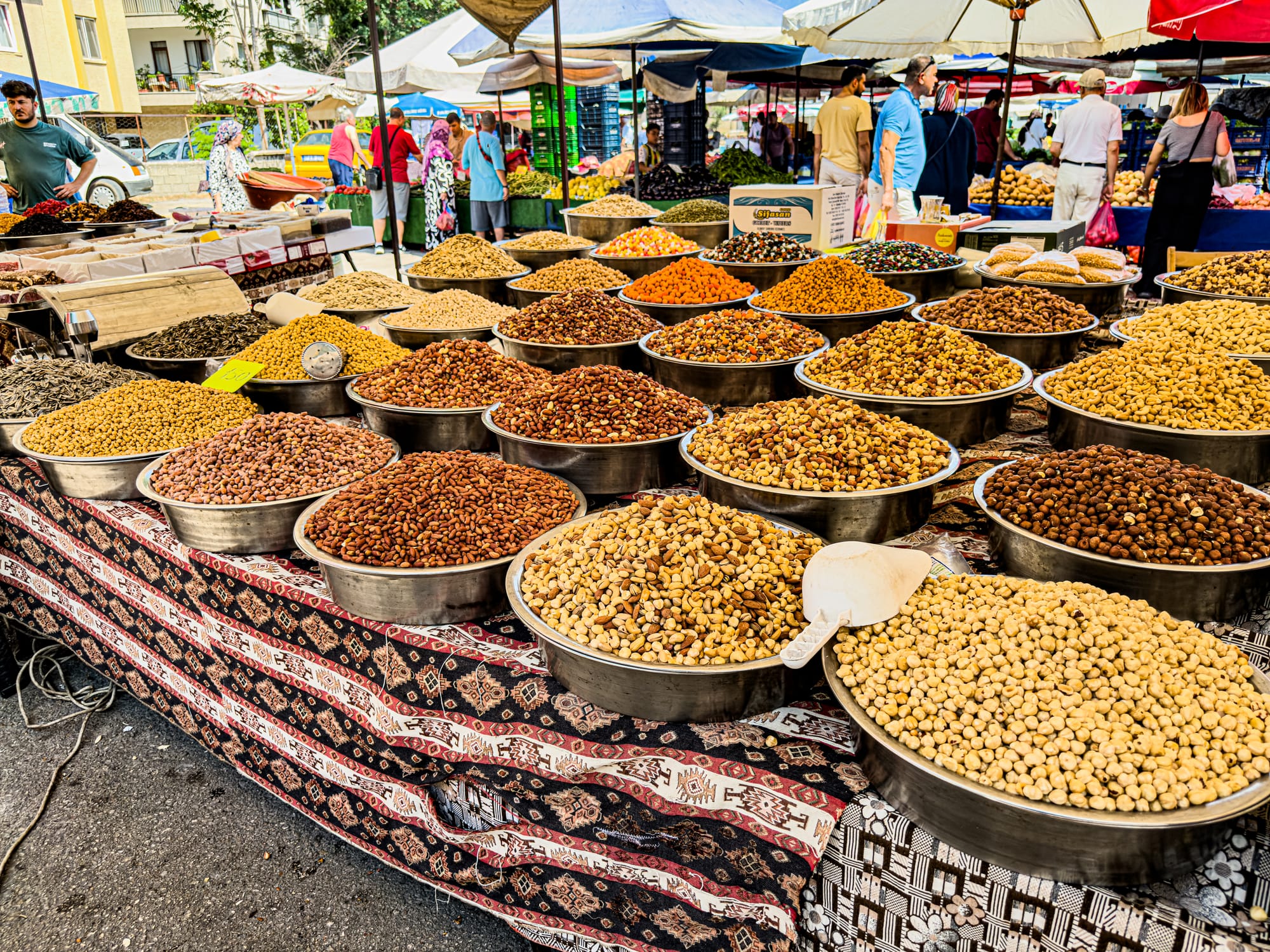
There are also barrels full of pickles, olives, and homemade jams. If you’re interested in cooking Turkish food, this is a great place to stock up on ingredients you might not find elsewhere—dried mint, pul biber (crushed red pepper), or even grape molasses.
When to go and what to expect
The market is busiest from late morning through early afternoon, but things are already underway by 8 a.m. and wind down by 3 or 4 p.m. The earlier you go, the better the selection, but the bustle builds throughout the day and makes for some of the best people-watching. Vendors are generally kind and relaxed, and though English may be limited, pointing, gestures, and a few Turkish words go a long way.
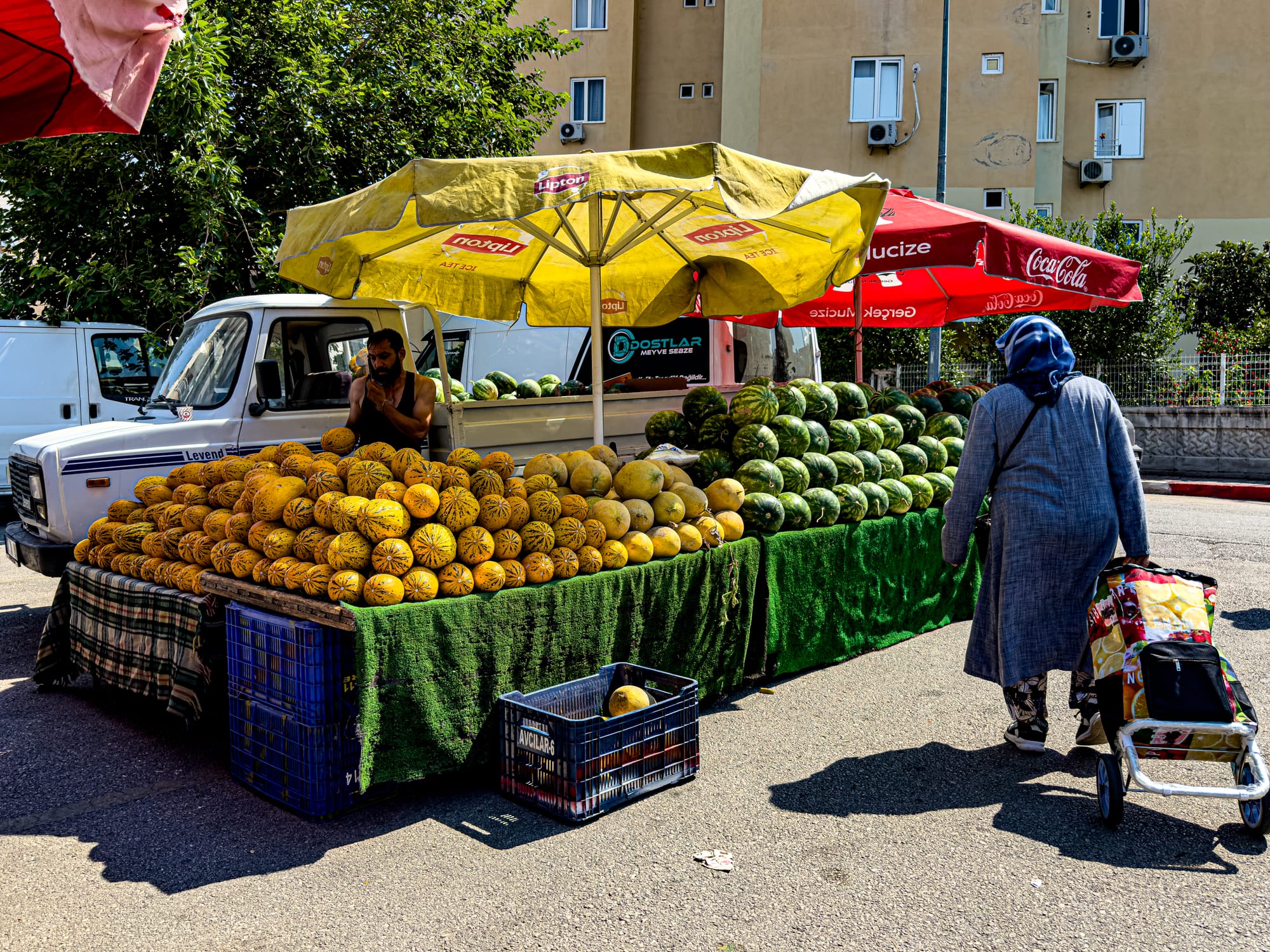
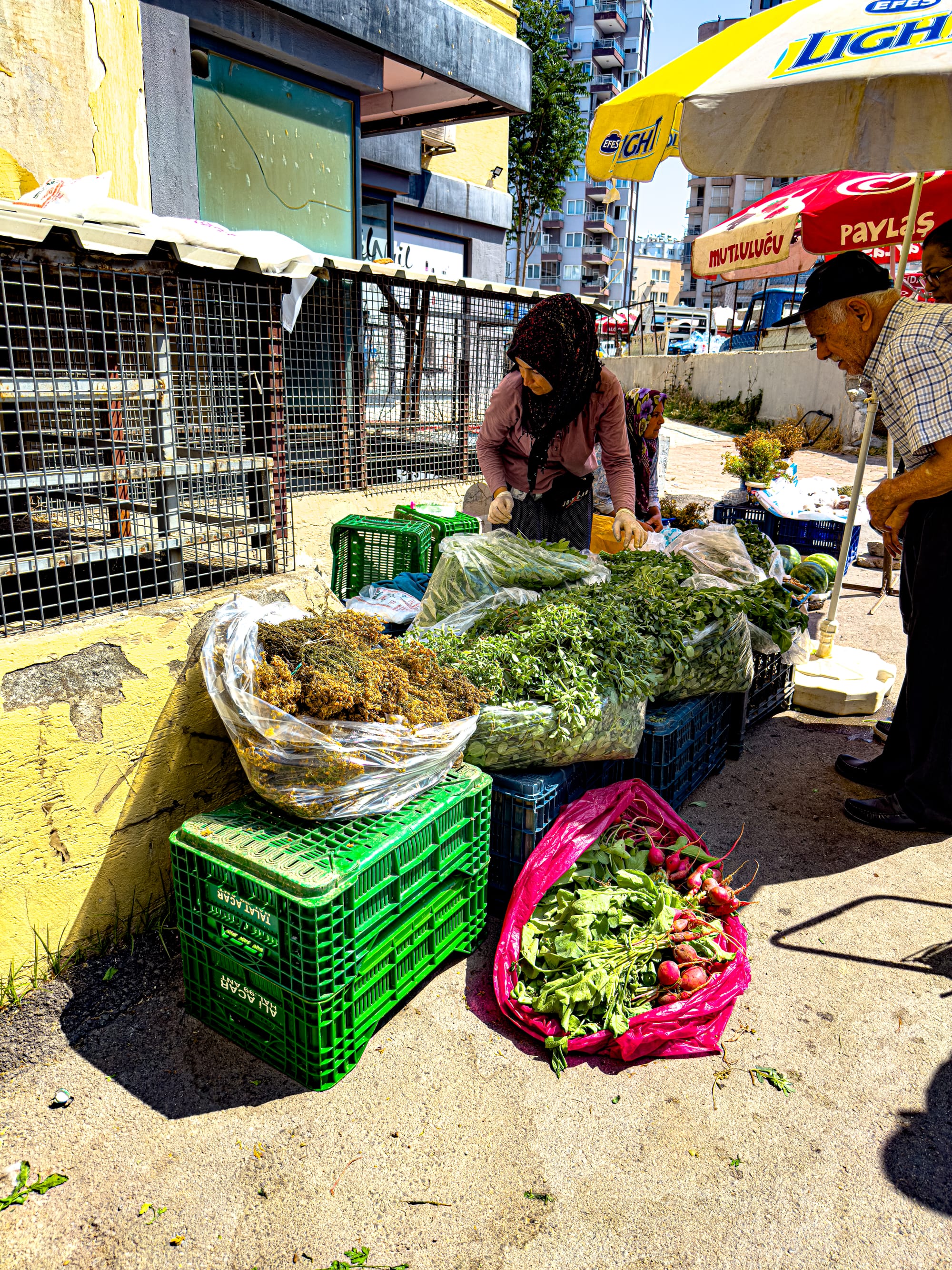
Locals shop for summer melons and fresh herbs, stocking up for the week at Antalya’s Friday Market
If you're visiting Antalya and want to understand something about how people live here—what they eat, how they shop, what the seasons bring—this is the place. It’s not curated for visitors, and that’s exactly why it’s worth showing up.
Tips for visiting the Friday Market
The market takes place every Friday in the Muratpaşa district in this location. We recommend going early for the best selection, or late for occasional end-of-day deals.
Be sure to bring your own reusable bag or tote. Vendors will provide plastic bags, but it’s easier to carry your haul with a sturdier bag, and obviously more eco-friendly too.
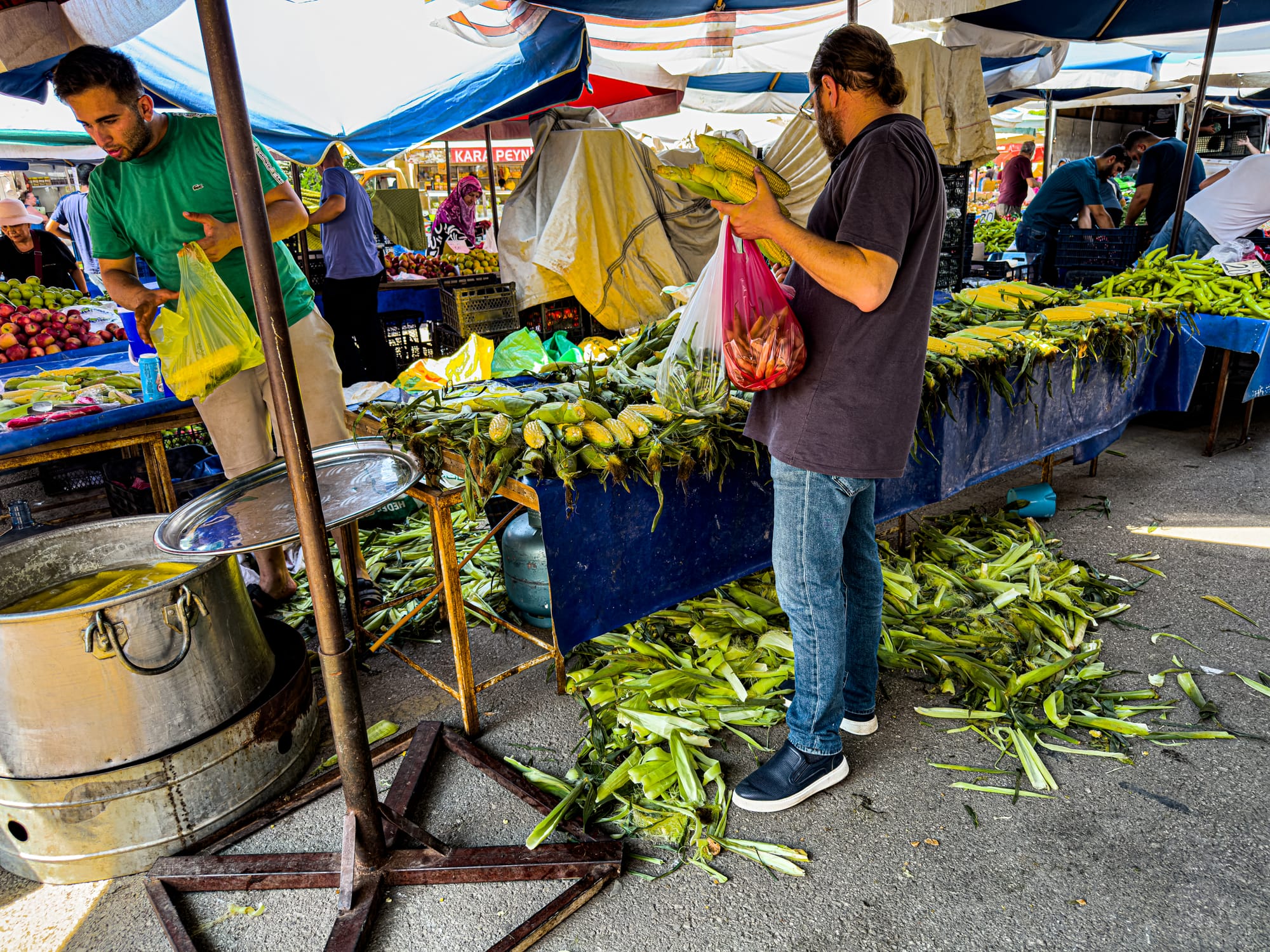
You'll want to have some small cash on hand, as most stalls operate cash-only.
And lastly, don’t be afraid to taste! Vendors often offer samples of fruits or olives.
Whether you’re shopping for groceries or just soaking in the textures of daily life, Antalya’s Friday Market offers one of the most grounded, colorful, and welcoming ways to spend a morning in the city.






